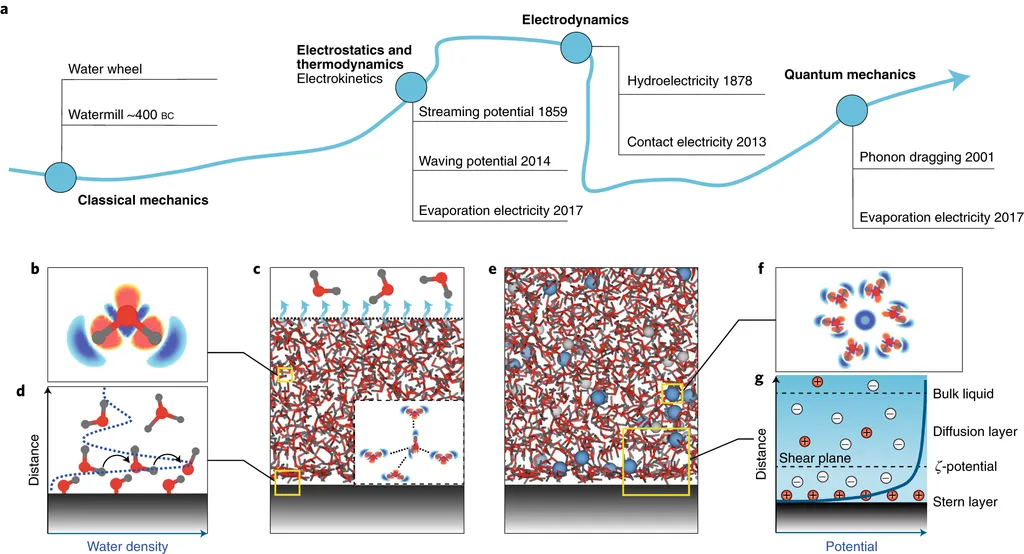In the quest for sustainable energy solutions, researchers Tarique Anwar and Giulia Tagliabue from the Massachusetts Institute of Technology have made significant strides in enhancing hydrovoltaic power generation. Their work, published in the journal Nature Communications, focuses on evaporation-driven hydrovoltaic (EDHV) systems, which harness natural evaporation to generate electricity from ambient heat and sunlight.
The researchers introduced an innovative approach by incorporating an intermediate ion-conducting layer into EDHV systems. This layer spatially and functionally separates the evaporative top interface from the silicon-dielectric nanopillar array at the bottom. By doing so, they achieved independent modulation of evaporation, ion transport, and interfacial chemical equilibrium. This decoupling strategy not only enhances device performance but also facilitates the study of thermal and photo-induced charge generation, ultimately improving ion migration and electricity generation.
To better understand the underlying processes, Anwar and Tagliabue developed a predictive equivalent electrical circuit model. This model captures the coupling between various processes through a transfer capacitance term, which is derived analytically as a function of geometric and material parameters. Their study revealed that capacitive photocharging and thermally modulated surface equilibria are the dominant drivers of energy conversion when interfacial environments are adequately engineered.
The researchers achieved impressive results with their device, which reached a state-of-the-art open-circuit voltage of 1 V and a peak power density of 0.25 W/m2 at a 0.1 M salt concentration. They also found that strategic variations in doping and material composition significantly enhanced performance. Increasing silicon doping, for example, boosted voltage by 28% and power by 1.6 times, while switching the dielectric shell from TiO2 to Al2O3 increased voltage by up to 1.9 times and power by 3.6 times.
These findings offer valuable insights for enhancing EDHV devices and suggest strategies that consider environmental conditions, water salinity, and material engineering to better harness waste heat and sunlight. As the energy industry continues to explore sustainable and renewable energy sources, this research provides a promising avenue for leveraging natural evaporation to generate electricity efficiently and effectively.
Source: Anwar, T., & Tagliabue, G. (2023). Enhancing Hydrovoltaic Power Generation through Coupled Heat and Light-Driven Surface Charge Dynamics. Nature Communications.
This article is based on research available at arXiv.

